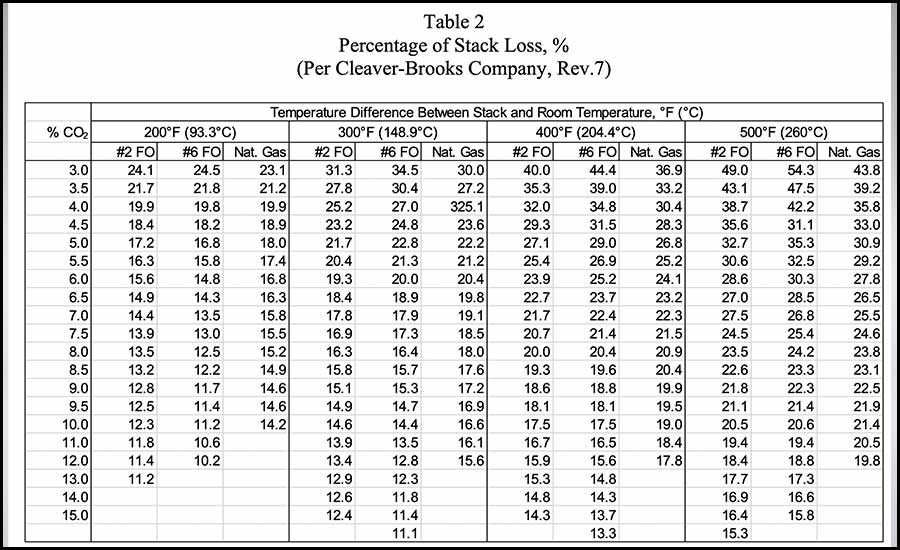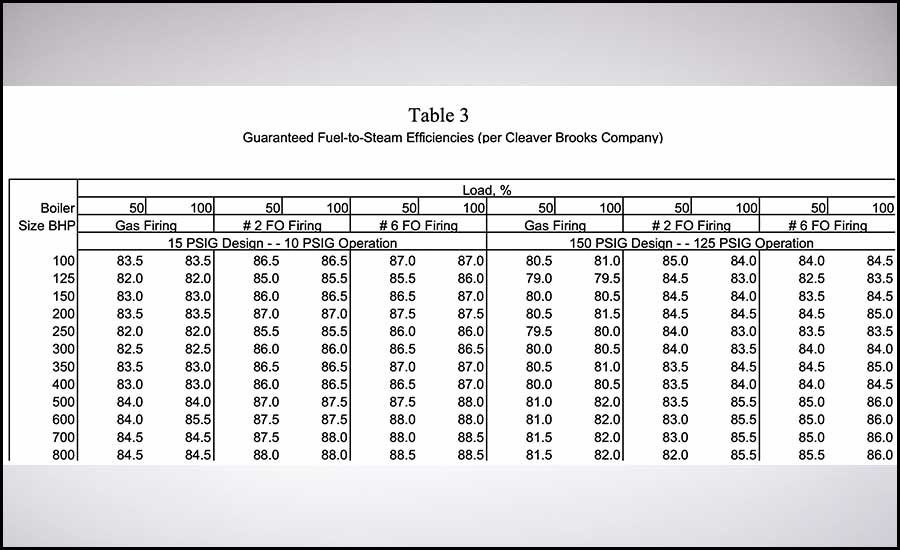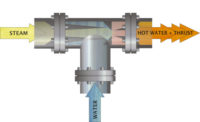Climate change is already affecting the U.S. and its economy. The majority of U.S. states have begun implementing major greenhouse gas mitigation-related measures. For example, the New York State Public Service Commission, in its order # 18-M-0084 of Jan. 16, 2020, authorized the NYS electric utilities portfolios of $2 billion on energy efficiency and heat pump rebates. The value of the customer rebates is based on potential savings to be recognized from the implementation of heat pump installation versus existing conventional heating and cooling systems. The comparison guiding document in the NYS is the technical resource manual (Ref.1) and the NYS Energy Conservation Construction Code (Ref.2), which adopts International Energy Conservation Code.
One of the challenges facing the building owner is the realistic comparison between the annual or seasonal efficiency of existing heating and cooling equipment with the proposed annual efficiency of the heat pump system and determination of the true cost that the potential customer is currently paying for useful heat and cooling consumed. The major factor in this determination is the individual customer’s boiler annual (seasonal) efficiency in converting the purchased fuel into useful heat. Quite often, the potential heat pump customer has no real knowledge of seasonal efficiency of his heating equipment.
Customers are required to use the aforementioned code documents per the minimums stipulated in the reference 2 heating efficiencies. For example, the minimum thermal efficiency of existing heating boilers is stipulated at 80%; however, it is well known that the real-world efficiency of customers’ space heating boilers is much lower. Therefore, it is justified to review the boiler efficiency definitions.
Boiler Efficiency
The efficiency of fuel-burning boilers has a number of definitions: combustion efficiency, thermal efficiency, fuel-to-heat efficiency, and seasonal efficiency (Rev. 3-5). An accurate boiler efficiency can be precisely determined only under test conditions, directly measuring the fuel input and the heat absorbed by the water or steam of the boiler. Precise efficiency measurements are not performed at boiler installation sites because of the costs involved. It is therefore common practice to use the efficiency value specified in Ref. 2. In accordance with Rev. 2, after Nov. 6, 2017, manufacturers must make any representations with respect to energy use or efficiency of gas- and oil-fired instantaneous water heaters and hot water supply boilers in accordance with the results of testing pursuant of energy conservation standards at 10 CFR 431.110. In accordance with this standard, the verification of the thermal efficiency test is performed for a 30-minute period at steady-state conditions.
In real life, in addition to the useful heat, the following boiler heat loss components must be determined:
- Dry flue gases;
- Water vapor from combustion of hydrogen;
- Water vapor in combustion air;
- Moisture in fuel;
- Incomplete combustion of carbon;
- Unburned carbon; and
- Radiation and convection.
Combustion Efficiency
Combustion efficiency is the effectiveness of the burner only and relates to its ability to completely burn the fuel. The boiler has little bearing on combustion efficiency. A well-designed burner will operate with as little as 15%-20% excess air while converting all combustibles in the fuel to useful energy. Combustion efficiency ranges from 75%-86% for most noncondensing boilers (Rev. 6). Approximate combustion efficiency for noncondensing boilers can be determined under any operating conditions by measuring operating flue gas temperature and percentage CO2 or O2 in the flue gases.
Thermal Efficiency
Thermal efficiency is the effectiveness of the heat transfer in the boiler heat exchanger. It does not take into account boiler radiation and convection losses (i.e., boiler casing, water column, front and rear doors, etc.) and off-cycle energy losses where the boiler cycles on and off. Radiation and convection losses will vary with boiler size, operating pressure, and from one manufacturer’s type to another, but have a standardized value set by the American Boiler Manufacturer’s Association (ABMA).
Fuel-to-Heat Efficiency
Fuel-to-heat boiler efficiency (FHBE) is the ratio of the Btu output divided by the Btu input and is the correct figure to use when determining fuel costs. It includes radiation and convection losses to the boiler room (Table 1, Rev. 7).
The major factor influencing the FHBE is the stack temperature or temperature of the exhaust gases leaving the boiler. The function of a good boiler design is to remove as much heat as possible from the hot gas leaving the burner. The second factor is the effectiveness of the burner. High and constant CO2 readings (with no CO and little O2) throughout the boiler operating range are good indicators of a good burner and a good air-fuel ratio control system. The combination of these two factors for the specific fuel results in a stack loss (Table 2). This stack loss is a measure of the heat carried away by the dry flue gases (unused heat) and the moisture loss (H2 to H2O) (the moisture loss component is already compensated for in the tables). Fuel to steam or hot water efficiency is obtained by subtracting the radiation and convection losses and the stack losses from 100%.
Additional Losses
Some of the thermal energy generated has to be used within the heating plant for auxiliary equipment. This includes power for fans and pumps, feedwater treating and heating, boiler blowdown, combustion air heating, compressed air for instruments, soot blowing, gland leakage, maintenance services, etc. Starting with a higher condensate or feedwater temperature will improve the system’s efficiency. The system that returns its condensate will have a higher efficiency than one where the condensate is lost and new cold water must be treated and then heated to an equivalent temperature. The generally accepted figure of 10%-15% for “in-house” consumption is a conservative number to be used.
Seasonal Efficiency
Seasonal efficiency is the actual operating efficiency that the boiler will achieve during the heating season at various loadings and operating conditions. Because most heating boilers operate at part load, the part-load efficiency, including heat losses when the boiler is off, has a great effect on the seasonal efficiency. Nearly all space heating boiler plants have at least 25% to 50% more capacity than is required at peak, so most boilers operate at peak conditions only rarely. Boilers operate under varying load conditions — sometimes down to approximately 10% of peak load or less.
In many cases, a single boiler will operate at less than 60% of full-load capacity for as much as 90% of the heating season. This translates into reduced efficiency because the burner operates in short, intermittent combustion cycles rather than in a sustained firing. The more closely a boiler matches the heating design load of the building, the higher the seasonal operating efficiency. For every 10% a boiler is oversized, efficiency drops by as much as 1%. There is no boiler that operates at design load throughout the year, and any departure from the design condition is a less efficient mode of operations. Table 3 demonstrates the impact of partial load operation (Rev. 7).
Whether a single boiler is being operated at partial load because the load is down, or two boilers are being operated at partial load because the system load has not dropped sufficiently for the firing of only one boiler, all of these conditions result in the reduction of boiler efficiency. Table 4 indicates at least a 5% drop in efficiency for load changes between 100% and 25%.
Table 3 further suggests an efficiency difference of another 3%-4% between natural gas and fuel oil firing in the same boiler. It is also important to note that these percentages are for boilers operating at design conditions — the stack losses calculations for off-peak conditions will further reduce the FHBE. The difference in seasonal efficiency between a boiler with on-off firing and one with modulating firing can be appreciable. Seasonal operating efficiency will be affected by the boiler’s steady state efficiency, standby losses (when the boiler is hot but is not being fired), and cycling losses. Unfortunately, no simple field test can be made to accurately determine seasonal efficiency.
While boiler operation and maintenance are important to every commercial building manager, there are always budget constraints. In the real world, funds for preventive maintenance, sophisticated automatic controls, and energy recovery systems must have a very short payback period to be justified. As a result of this payback requirement, expensive energy savings boiler auxiliary systems are seldom installed. These are the real-world constraints to which most boiler plants are subjected. All of these conditions reduce a boiler’s seasonal efficiency. Maintenance costs can frequently wipe out customer satisfaction in even the most carefully planned installation. Cleaning the boiler is a complex, time-consuming job. The front and back doors must be opened or removed. Baffles must be pulled out and replaced. Although this is generally done annually, it may need to be repeated at more frequent intervals to maintain high operating efficiencies.
As an example of boiler system efficiency, let us analyze a boiler plant with three 250-BHP boilers designed for #6 fuel oil firing that is currently being run on natural gas, with all three boilers running at 50% load. The design stack temperature was 300°F with a CO2 reading of 9.25%, but because the excess air has not been trimmed back, the stack temperatures are now 500°F with a CO2 reading of 7.25%. For these conditions we will have:
Base design boiler efficiency at best, 83.5%
Off-standard stack losses -11.0%
Radiation and convection losses -1.2%
Partial load & fuel change losses -4.0%
Excess moisture in fuel and air -1.0%
Condensate/feedwater losses -1.0%
Heat and power generation losses -10.0%
Actual Efficiency 60.3%
Source: Rev. 7
The real-world seasonal efficiency numbers can be determined during a long-term comparison of fuel consumption by a boiler and without boilers. This can be done when the boiler is disconnected and the building is supplied with useful heat by a metered district heating system. Such information has been collected and is presented below (Rev. 8-20). In one district heating system, managers were planning to connect an existing 35-story commercial office building (Building A) to the district system. Building A had a relatively new 12-year oil boiler and a hot water, forced-air space heating system. The hot water used for the space heat was heated in two steam to hot water heat exchangers supplied with 40-psi steam generated by three forced draft, natural gas, fired boilers. The boilers were in excellent condition. Upon the building engineer’s request, the local natural gas utility and boiler manufacturer supplied the building owner with letters stating the boiler plant’s seasonal efficiency was at least 80%.
It was decided to compare the natural gas energy consumption of Building A with the steam energy consumption of similar buildings on district steam to get an indication of what Building A’s boiler efficiency might be. Existing buildings on the district steam system have been analyzed, and three buildings similar to Building A were identified. The features that were critical for all buildings in the comparison to have in common were:
- Similar age;
- High-rise commercial office building;
- Hydronic heating systems; and
- Very well maintained and efficiently operated heating systems.
An energy consumption breakdown form was developed (Table 5) in order to demonstrate the buildings’ similarities. The survey of the buildings and analysis of actual steam bills resulted in the steam usage presented in Table 6. Table 6 also presents the actual gas consumption of Building A. The results show that buildings 1, 2, and 3 use 57% of the energy per square feet required for space heating of Building A., or the boiler plant seasonal efficiency of building A is 57%.
Eventually, Building A was connected to the district steam system. Table 6 compares the energy consumption of Building A operating with district steam for one season versus its previous three- year average natural gas consumption. This comparison indicates a seasonal boiler efficiency of 60%.
For comparison, data has been collected from a number of district heating systems in St. Louis; St. Paul, Minnesota; Trenton, New Jersey; Rochester and Jamestown, New York; and Harrisburg, Pennsylvania (Table 7). The buildings used in this comparison were operated at the same conditions except that the fuel source was changed from in-house boilers to district steam or hot water energy. The result of the survey (Table 7) indicates that the average real-world efficiency of these in-house boiler plants is 57% with a range of 39%-73.9%. This seasonal efficiency number takes into account the following factors in the real-world conditions:
- Conservative oversizing that takes place when selecting a boiler;
- Varying loads of a space heating boiler;
- Age of the boiler;
- Real-world boiler maintenance and operation; and
- Additional infiltration into a building to provide combustion air to the boilers.
Based on the performed investigation, it is recommended the boiler seasonal efficiencies presented in Table 8 be used for analysis.
References
1. NYS Technical Resource Manual, Version 7, 2020.
2. 2020 NYS Energy Conservation Construction Code, Adopted with Amendments from International Energy Conservation Code, Uniform Test Method for the Measurement of Thermal Efficiency and Standby Loss of Gas-Fired and Oil-Fired Boilers, Test Procedure 10CFR Part 431 Appendix C to Subpart G.
3. ANSI/ASHRAE Methods of Testing for Heating Seasonal Efficiency of Central Furnaces and Boilers. Standard 103-2017, Including Errata Sheet Dated April 25, 2019.
4. Landry, R.W., Maddox D.W., Lowenstein M.S. and Bihac D.L., "Measuring Seasonal Efficiency of Space Heating Boilers", ASHRAE Journal, September 1993.
5. Karakas, J.T. and Kawasaki, T.S., "How to Measure Low-Pressure Steam Boiler Efficiency", ASHRAE Journal, September 1993.
6. Dyer, D.F., and Maples, G., "Boiler Efficiency Improvement", Boiler Efficiency Institute, Auburn, Alabama, 1981.
7. Boiler Efficiency Facts, Cleaver Brooks Company.
8. Smith, W.A., "The Myth of the 80% Efficiency Boiler System", Proceedings of the IDHCA, 1987.
9. Tierney, T.M. and Fishman, C.J., "Real World Boiler Efficiency", Proceedings of the IDHCA, 1987.
10. Reisdorf, J., "Seasonal Efficiency of Relatively New Building Boiler System", Proceedings of the IDHCA, 1988.
11. Oliker, I., "Twenty Five Years of District Heating Development in Jamestown, NY", EPRI District Energy Workshop, Jamestown, N.Y.
12. Russell W. Landry; Douglas E. Maddox; Mary S. Lowenstein; and David L. Bihac, Measuring Seasonal Efficiency of Space Heating Boilers. ASHRAE Journal, September 1993.
13. Karakas, J., Zbaracki, T. 1993. "Field measured seasonal efficiency of intermediate-sized low-pressure steam boilers!' ASHRAE Transactions. Atlanta, Georgia: ASHRAE. Vol. 99, Pt. 2.
14. Landry, R., et al. 1994. "Field validation of diagnostic techniques for estimating boiler part-load efficiency." Published in ASHRAE Transactions. Atlanta, Georgia: ASHRAE. Vol. 100, Pt. 1.
15. Lowenstein, M., et al. 1994. "Application of short-term diagnostic methods for measuring commercial boiler losses!' To be published in ASHRAE Transactions. Atlanta, Georgia: ASHRAE. Vol. 100, Pt. 1.
16. Landry, R., et al. 1993. "Seasonal efficiency and off-cycle flue loss measurements of two boilers!' ASHRAE Transactions. Atlanta, Georgia: ASHRAE. Vol. 99, Pt. 2.
17. Madera, M. 1988. "Jacket and stack losses from multifamily boilers." Proceedings of the ACEEE 1988 Summer Study on Energy Efficiency in Buildings. Washington, DC: American Council for an Energy Efficient Economy.
18. Tierney, T.M Real World Boiler Efficiency Update, Presented at the 80 th Meeting of International District Heating and Cooling Association, ,June 1989
19. Tierney, T.M and Fishman, C.J Real-World Seasonal Efficiency of Gas-Fired Steam Boilers, ASHRAE Journal, September 1994.
20. Barnes, J. Real Boiler Efficiency. District Heating and Cooling Magazine, First Quarter 1990.













